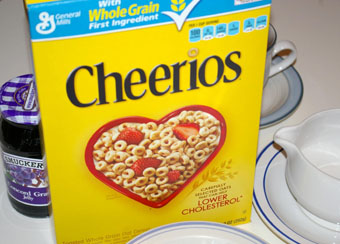
What's Changing in Cheerios?
By Thursday Review staff | published Friday, Janaury 3, 2014 |
The durable Minneapolis-based General Mills, a company known for nearly 150 years for it breakfast cereals and other wholesome food, has made one small change to their most iconic of products—Cheerios. It’s not the packaging or the logo or the typeface that’s changing, nor is it the whole grain oats or the modest sugar content.
General Mills has announced the removal, starting immediately, of what are known as “genetically modified” ingredients, those elements in many food products which have been subject to genetic alterations by manufacturers in order to increase their size or nutrient content, or to make the foods more resistant to pests or spoilage.
Consumer advocates and environmentalists have complained for years that the advent of genetically altered crops poses greater risk to humans than those crops raised through conventional farming methods. Food companies like General Mills, PepsiCo and Monsanto have found that altering the DNA of certain foods can yield larger quantities while also making the foods more durable on the shelf and in packaged products.
But in the wake of several states taking ballot or legal measures, and the face of growing concern by consumers, General Mills decided to move proactively, removing some of the genetically altered foods from its production line and from grocery store shelves. Several states were taking steps toward requiring foods to contain warning labels and content labels indicating the presence of genetically altered ingredients, a move which General Mills and other companies opposed.
General Mills, whose large family of brand names includes Yoplait Yogurt, Totino’s Pizza, Betty Crocker and Green Giant, is the third largest food company in the United States.
Cheerios were introduced in 1941 shortly after a GM engineer, Thomas R. James, developed the first “puffing gun,” a gadget which allowed grain products to be reconstituted and inflated into “shapes,” enabling lighter, three-dimensional cereals to compete with flakes and flatter ground-meal.
According to the website Bakery and Snacks.com, Cheerios and its sibling Honey Nut Cheerios were both among the top ten biggest sellers in the last year among all breakfast cereals.
